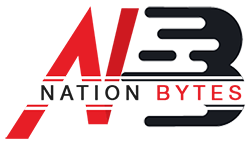How to Build a Strong Personal Brand in the Digital Age
Learn personal branding, how to brand yourself, and how to create a successful brand strategy. Start building your brand with expert tips today.

In today's digital landscape, personal branding is more important than ever. It is not just a tool; it is a powerful means of empowerment, a way to carve your unique identity in a crowded space. Whether you are launching a business, climbing the corporate ladder, or pursuing freelance opportunities, a strong personal brand can set you apart. It's your unique selling point in a competitive market. But what does that mean, and how can you create a brand that feels authentic to you? Let's break it down.
What is Personal Branding?
At its essence, personal branding is the art of presenting yourself to the world. It is the narrative you weave about your identity, your values, and what sets you apart. It is a strategic tool for managing your reputation and exhibiting your skills, values, and personality. In a world inundated with resumes and LinkedIn profiles, a well-defined personal brand can be your beacon.
Step 1: Discover Your Brand Identity
Before you can build a brand, you need to know what it is. Take a moment to reflect:
-
What are your passions? What gets you excited every day?
-
What are your strengths? What do people often compliment you on?
-
What values do you hold dear? What principles guide your decisions?
Consider crafting a personal brand statement. For instance, "I empower small businesses to grow their online presence through engaging content" clearly communicates who you are and what you do.
Step 2: Establish Your Online Presence
Your online presence is often the first impression people have of you, so make it count. Here are some key components:
-
Choose Your Platforms Wisely
Select social media platforms that align with your goals. LinkedIn is essential for professionals, while Instagram might be better for creative fields. Make sure your profiles are complete, professional, and reflect your brand identity. Use high-quality photos and a consistent tone in your posts.
-
Create a Personal Website or Blog
A personal website is your digital canvas, a space to exhibit your work and share your musings. It's a digital portfolio where you can highlight your achievements and publish blog posts that resonate with your field. This not only showcases your expertise but also boosts your online discoverability.
-
Engage Authentically
Don't just broadcast your thoughts—engage with your audience authentically. Respond to comments, participate in discussions, and show genuine interest in others’ content. Building relationships is key to establishing a strong personal brand, and authenticity is the foundation of these relationships. It's not just about what you say but how you say it and how you make your audience feel.
Step 3: Share Valuable Content
Content is the heartbeat of personal branding. Sharing your insights and experiences positions you as an authority in your field. Here are a few ways to create meaningful content:
-
Blogging
Write about topics that excite you and resonate with your audience. Share your expertise, lessons learned, or industry trends. Regular blogging not only helps you connect with readers but also enhances your website's visibility.
-
Explore Videos or Podcasts
If you enjoy speaking, consider creating video content or starting a podcast. These formats can help you connect with your audience on a deeper level. You can share your thoughts, interview industry leaders, or provide tutorials on topics you are passionate about.
-
Engage on Social Media
Share relevant articles, personal stories, and insights on your social media profiles. Use visuals and engaging captions to make your posts stand out. Remember, authenticity is key—let your personality shine through.
Step 4: Network with Purpose
Networking is not just about collecting business cards; it is about building meaningful relationships. Here are some strategies to network effectively:
-
Connect Online
Join groups or forums related to your industry on platforms like LinkedIn or Facebook. Engage in discussions, ask questions, and share your knowledge. Building connections can lead to collaborations and new opportunities.
-
Attend Events
Whether virtual or in-person, attending industry events can help you meet new people and learn from others. Be open to conversations, and do not hesitate to introduce yourself. You never know where a simple chat might lead!
Step 5: Monitor and Evolve Your Brand
Your brand is a living entity; it changes as you grow and evolve. Here's how to keep it fresh:
-
Google Yourself
Check what comes up when you search for your name regularly. This will help you understand how you're perceived online and allow you to manage your digital footprint.
-
Seek Feedback
Be bold and ask for feedback from trusted colleagues or friends. They can provide valuable insights into how you're perceived and suggest areas for improvement.
-
Stay Adaptable
Keep an eye on industry trends and be willing to adapt your branding strategy as needed. This might involve learning new skills, exploring new platforms, or refining your messaging.
Building a personal brand in the digital age is not just a journey of professional growth but also personal. By understanding your identity, creating a professional online presence, sharing valuable content, networking with purpose, and continuously evolving, you can establish a brand that resonates with others. Remember, your brand is a reflection of who you are—embrace it, nurture it, and let it shine. The world is waiting to hear your story!








